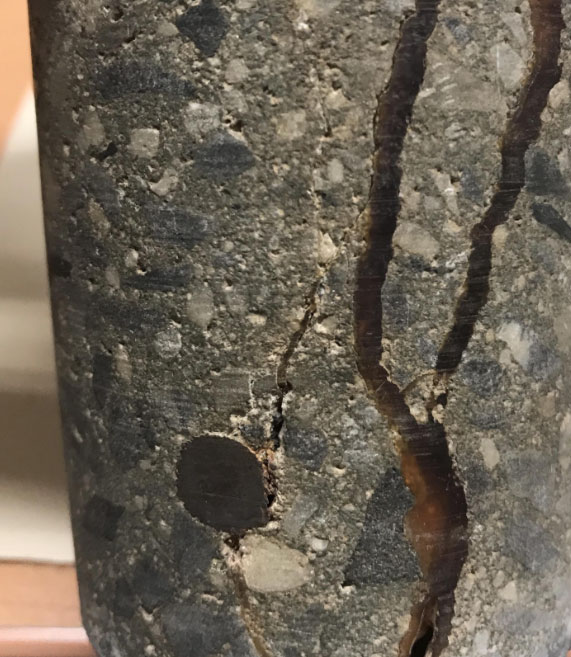A cracked foundation in your structure or home can lead to many other issues. It is best to treat foundation cracks early. While there are many repair methods for concrete wall cracks, injecting epoxy is a simple solution. Epoxy injection will restore stability without disturbing the foundation, or affecting your daily routine.
What is Epoxy Injection?
Epoxy injection is the process of injecting an epoxy resin into cracks to essentially glue the concrete back to its original state. It is an economical way to restore cracked concrete slabs and walls back to their original structural design. It is recommended to determine the original cause of the cracking and to remedy that issue prior to injection to have a long-lasting repair.

Epoxy Injection: Benefits and Applications
Epoxy injection is a non-invasive, thorough, and permanent repair process. Furthermore, epoxy is a stronger material than concrete, and is more cost effective than replacing the concrete. On top of that, epoxy is suited to repair most common structural elements. The selection of applications includes concrete support columns, concrete slabs, foundation walls, and more. Epoxy injection will provide both a full structural repair and keep unwanted moisture out.
3 General Steps to Epoxy Injection
1. Remove Dirt & Debris from Foundation Crack
Before injecting the epoxy, dirt will be cleared with a wire brush from the crack. Also, compressed air or water may be used to remove any debris to create a clean, surface in preparation to mount the injection ports. If there is any trickling water or moisture after cleaning the surface, address the issue at its source and cut off any flow before proceeding, the area must remain dry.
2. Setting the Epoxy Injection Ports in Place
Set injection ports along the length of the crack. Spacing is typically determined based upon thickness of the substrate being injected (i.e. if wall is 8” thick spacing will be roughly 8”)
Once ports are drilled or glued in place the crack is the bridged with an epoxy paste which is a sealer to contain the epoxy resin during the injection process. It is important to spread paste roughly 1” to either side of crack for the entire length of crack to ensure adhesion during injection. After epoxy is used to secure all of the ports and the visible crack locations have hardened, the crack(s) will be ready for epoxy injection.
3. The Epoxy Injection Process
Correctly injecting the epoxy is the most critical step. The process starts with injecting epoxy into the lowest port, and gradually working upwards. The epoxy will usually travel from port to port. When this happens, you can lock off the port you are injecting from and move on to the next port in line. The process is finished when all of the ports are no longer accepting epoxy. The area must be kept dry until well after the epoxy has completely cured.
Conclusion
Epoxy injection is an exceptional repair method for simple cracks in a concrete foundation wall; and many other structural elements. However, there are different serious situations where helical piles, permeation grouting, and slab jacking in conjunction with Epoxy Injection may be more appropriate solutions. Contact us to see which option will suit your needs best.
